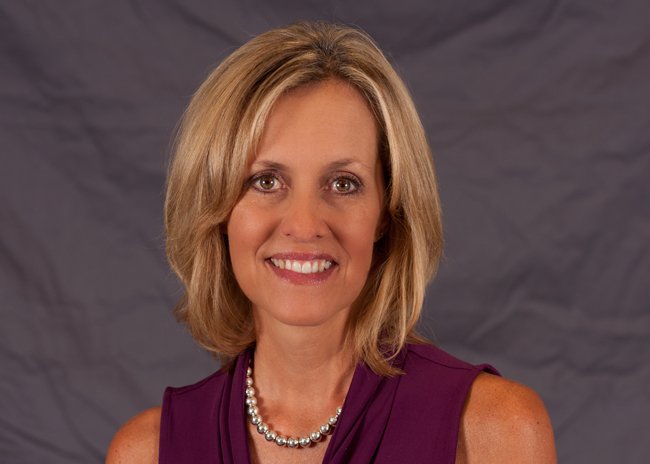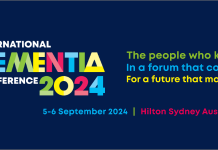In this interview, Inside Ageing (IA) spoke with Susan Ryan (SR) from The Green House Project about their unique approach to aged care and the benefits, especially for those living with dementia. Susan will be speaking at the International Dementia Conference in Sydney on September 8 & 9.
IA: You have been with The Green House Project (GHP) since its inception close to 20 years ago. What can you tell us about that journey, including the purpose and uniqueness of the approach to aged care?
SR: I’m a registered nurse by training, and I started my career in the nursing home setting. At that time, physically restraining elders was considered a best practice; we were trained to literally tie them down to beds and chairs to prevent falls and elopement, thus keeping them “safe” and making life easier for the staff.
My head and heart told me this was deeply wrong, and I spent the next phase of my career advocating for expanded home care options to keep elders and people with disabilities out of those dreadful nursing homes.
Home health care is a wonderful alternative to institutions, and it must be made available to every elder who wants it. But over time, I came to realise that it wasn’t the one-size-fits-all option that many advocates purport it to be. Many people don’t have homes that were designed for ageing in place, and many elders live alone after the death of a spouse; isolation from friends, family, and community can be just as harmful to wellbeing as physical ailments. Occasional visits from a home health aide are not a substitute for real mental, intellectual, and spiritual engagement.
In addition, from a financial standpoint, home health care isn’t always the most financially viable option – especially in the U.S. where both public and private insurance coverage for home services is far from universal and comprehensive.
So when I had the opportunity to join the organization in March 2008, I took it. The Green House model represents, in my view, the baseline standard of what communal care should be: private rooms, private bathrooms, free access to outdoor space, and a philosophy of care that puts the residents’ needs, wants, and interests at the centre of every day-to-day decision.
Residents with dementia are not segregated into separate locked areas; instead, caregivers focus on all elders’ retained abilities and autonomy. It’s the polar opposite of what I observed at the start of my career, and it’s built on the unshakeable foundation that people are still people no matter their physical and cognitive challenges. Too often in eldercare, even well-meaning caregivers see people as the clinical diagnoses and labels we assign to them – dementia, fall risk, wanderer, behavioural problems. The Green House model challenges caregivers to go beyond those labels and always see the person behind them: the person who lived a full, rich life before requiring additional care and who deserves to keep living with that same richness amid the natural changes that come with aging.
IA: The design of the cottages complemented by a community feel is based on research that demonstrates inherent benefits when it comes to aged care, including dementia care. What can you tell us about that research and some of these benefits?
GHP has been fortunate to receive significant attention from researchers since its inception, and the outcomes speak for themselves. Elders in Green House homes have reported improvement in a variety of quality-of-life domains, including dignity, autonomy, meaningful activity, and food enjoyment. Residents also maintain self-care abilities longer than those in traditional nursing homes, while having lower incidences of depression and being bedridden.
It’s important to note that these improvements aren’t just a function of the design. You can’t just build a cluster of small-home eldercare cottages and expect to achieve these outcomes with a traditional care home staffing model and mindset. The universal caregiver is essential to creating the real home environment that sets Green House homes apart: In addition to traditional aide tasks such as assistance with activities of daily living, Green House caregivers cook meals in a communal open kitchen and perform housekeeping tasks.
This more closely mirrors the way caregiving occurs naturally in private homes, and it also leads to substantially more interaction between staff and residents – up to 31 additional minutes per resident per day than in a traditional facility. This helps caregivers better respond to residents’ wants and needs, while also allowing them to observe changes in physical and mental condition earlier – leading to timelier interventions by the clinical team.
IA: Recent research has highlighted that smaller aged care facilities have experienced lower infection rates of COVID-19. Has the impact of COVID increased interest in your model of care?
SR: Absolutely yes. Since the early days of the pandemic in 2020, the superior COVID outcomes in Green House homes have brought national and international attention to the model. Research from the University of North Carolina, along with our own internal data, clearly illustrates the infection control power of Green House living.
In 2020, Green House homes had half the number of COVID-19 infections as traditional nursing homes and 3.5 times fewer coronavirus deaths. Those numbers held in 2021, with 2.5 times fewer infections and 3 times fewer deaths.
As with the other improved outcomes, the infection control advantages of Green House homes have as much to do with the staffing model as physical design. Certainly, private rooms and bathrooms substantially reduce opportunities for viral spread; shared outdoor space also provides safe settings for visits and socially distanced gatherings.
But research has illustrated that COVID infections and outbreaks in nursing homes are also driven by the number of staff members coming in and out of the facility. In the U.S., where many providers rely on temporary staffing agencies – and low-paid caregivers are forced to hold multiple jobs to make ends meet – staff members became unwitting vectors of COVID spread, acquiring the virus in the community or at one facility, then spreading it to multiple others.
Conversely, each individual Green House home has its own small dedicated staff team; caregivers typically do not work in multiple homes on a single campus. Workforce turnover of care aides at Green House homes is also about four times lower than the national average in nursing homes, a result of the greater worker satisfaction and empowerment that universal caregivers report. This consistent staff assignment played a crucial role in the impressive COVID outcomes.
Policymakers in the United States have taken notice, with a variety of efforts at the state and federal levels to stimulate the development of more Green House homes. U.S. Senators in 2021 introduced a reform bill that would set aside $1.3 billion in capital funding for the construction and renovation of nursing facilities to meet Green House standards; the American Bar Association, citing the Green House model’s success during the COVID pandemic, called upon the federal government to make private rooms and bathrooms in nursing homes a prerequisite for receiving public funding.
Most notably, earlier this year, the National Academies of Sciences, Engineering, and Medicine (NASEM) included several Green House principles – including private rooms and bathrooms, outdoor space, communal kitchens, an empowered and consistent staffing model, and person-centred care – in a sweeping report of recommendations to improve the U.S. nursing home system.
The interest is also international. In addition to this trip to Australia, our team has consulted with providers – and presented to organizations of long-term care leaders – in Canada, Europe, and the Middle East.
IA: From an aged care provider’s point of view who may be looking to incorporate your model of care into their offering, how do the numbers stack up when compared to residential aged care that offers larger facilities? Is the return sufficient given the smaller scale or are there other factors that need to be considered?
SR: Simply put, the model works just as well financially as it does clinically. Some research from the early days of the model showed that capital costs for Green House homes are equal to or less than traditional facilities, while staffing expenses stay the same. In practice, capital costs for Green House communities can be slightly higher, depending on the market and individual design requirements, but the operational benefits provide better long-term returns on investment.
While it may seem as though the staffing structure should cost more, given the increased time spent with residents, the Green House model simply shifts dollars to where they matter most – direct caregiving – and away from administrative overhead, such as dietary and housekeeping departments.
Turnover is four times lower at Green House homes than at traditional facilities, substantially reducing training and temporary staffing costs.
Due to the better living environment and increasing concerns among elders and families about living in institutional facilities, occupancy at Green House homes is also significantly higher than at traditional nursing homes, providing a more consistent stream of revenue for operators: In 2021, Green House homes were approximately 88% full, while overall U.S. nursing home occupancy sat at 70.6%.
About 49% of Green House residents nationwide are covered under Medicaid, the state/federal health insurance program for low-income Americans, though the number can be substantially higher at individual communities. Among providers, Medicaid residents are considered the most financially challenging, as per-day reimbursements are lower than Medicare and out-of-pocket rates, but Green House homes can still provide the same level of care for Medicaid-covered elders; in fact, one Green House provider with more than 50 homes across Arkansas budgets each new community with a hypothetical 100% Medicaid census to ensure sufficient returns and quality care for all regardless of financial status.
IA: Tell us a little bit about how an arrangement would work where a provider wants to build Green Houses. Would you license the design and work with the provider to build or is there a different approach?
SR: The Green House Project is a full-service project consultant from start to finish. A project coach oversees the process through all phases of development – from financial planning to design to regulatory compliance to staff training – ensuring that the organization can implement and sustain the model for the long term. Building small-home structures is the relatively easy part; creating a true Green House culture that can withstand an organisational tendency to backslide into old habits and mindsets is the true challenge.
The Green House education team provides on-the-ground education and training for staff and company leadership – covering not just the principles of the care model, but also leadership, coaching, and team development strategies to ensure that the community is built on a solid, sustainable foundation.
GHP charges a nominal annual fee for the use of the Green House trademark; in return, providers receive access to the LinkedUp peer network of fellow adopters, with year-round educational programming and platforms for sharing best practices. Peer network membership also includes participation in an annual model-sustainability survey, in which frontline caregivers and management alike report on how well their organization has met the principles of Green House living. GHP then helps them to identify areas of improvement and provides additional training and education as necessary.
IA: Apart from aged care providers, are you finding local government is starting to take an interest in adopting Green Houses as part of their communities? Do you have any examples where a local government has taken this approach and if so, what have been the outcomes?
SR: Yes, GHP has received inquiries from state governments and other municipalities about implementing the Green House model, with a marked increase since the start of the pandemic.
New York State, for example, set aside $50 million for new Green House development in its annual budget. In Wyoming, state officials will soon open a Green House community for people with intellectual and developmental disabilities, replacing an outdated hospital-style institution. In Illinois, the federal Department of Veterans Affairs operates a Green House community for veterans outside of Chicago. In Colorado, Washington County replaced its traditional nursing home with a Green House community.
IA: You will be speaking at the International Dementia Conference in Sydney on September 8 & 9. Would you like to share some information about what you will be speaking about at this event?
SR: I’m excited to give the ageing community a more in-depth picture of the Green House model and its potential to transform care – not just for elders, but for any people who have traditionally been forced to receive care in outdated, inhumane, and undignified institutions – across Australia.
I’ll be focusing on the data related to Green House homes and the COVID-19 pandemic, with a particular spotlight on how organizations achieved substantially lower rates of infection and death through both small-home physical design and the unique Green House staffing model.
I’m also excited to learn from speakers and attendees about unique innovations in Australia. We’ve collectively discovered during COVID that the problems facing eldercare systems around the world are universal – but also that the imagination of reformers and forward-thinking leaders is limitless. By coming together and listening to visionaries from around the world, we can build the future we want for elders today and ourselves in the future.










